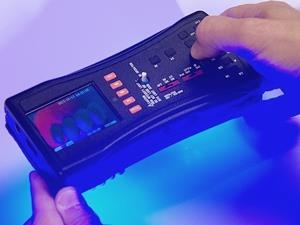Testing for counterfeit antimalarials in Africa will help validate a new tool for inspectors
A handheld, battery-powered detector will help officials identify counterfeit antimalarial drugs in a trial in Ghana. The trial will test how effective the device is at identifying suspect medicines.

The CD-3 counterfeit detection device uses a variety of different wavelengths of light to visually compare tablets, capsules and their packaging with genuine reference samples. The different colourings and compounds in counterfeit formulations, and different inks and materials in their packaging, reflect or fluoresce differently to the real thing. Comparing them side by side gives a quick and simple way to spot possible fakes.
The device has been developed by the US Food and Drugs Administration (FDA), which has set up a public-private partnership to test it in the field. The project will supplement existing drug surveillance programmes in Ghana, focusing on two common antimalarial drugs. The trial builds on smaller trials conducted in the FDA’s laboratories and international mail facilities in the US since 2010.
Counterfeit drugs pose a serious risk to public health. Taking ineffective medicines can threaten the lives of patients. For diseases, such as malaria, where resistance to drugs develops extremely quickly, taking medicines with reduced amounts of active ingredients, or single compounds rather than recommended combination therapies, can help resistance develop even faster.
The partnership is led by the US Agency for International Development, with funding from the Skoll Global Threats Fund, the US Pharmacopeia and the US President’s Malaria initiative, and technical support from the US Centers for Disease Control and Prevention and National Institutes of Health.












No comments yet